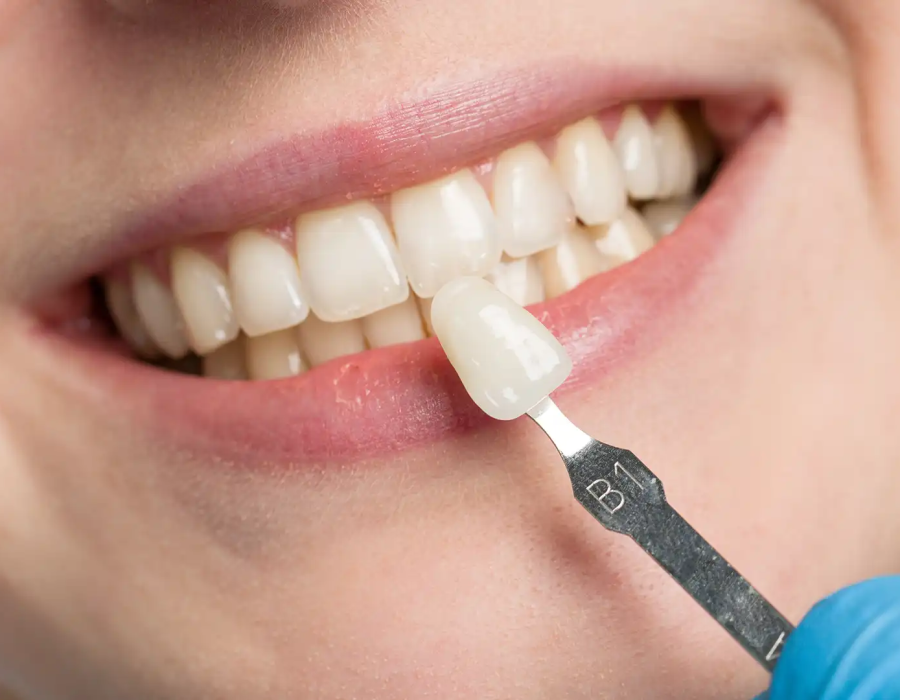When it comes to enhancing your smile, two of the most popular cosmetic options are composite veneers and porcelain veneers. While both are designed to cover imperfections such as stains, chips, or gaps, they differ significantly in material, cost, durability, and application. Understanding the differences between composite veneers vs porcelain will help you make the best decision for your dental goals and budget.
Materials and Aesthetic Results:
The main difference lies in the materials used. Composite Veneers in Dubai are crafted from a tooth-colored resin, the same material used in dental bonding. It is applied and shaped directly on the teeth. In contrast, porcelain veneers are thin, custom-made ceramic shells created in a dental lab.
- Composite resin offers a more affordable and immediate result
- Porcelain mimics the translucency and gloss of natural enamel better
- Porcelain veneers are stain-resistant, while composite may discolor over time
- Composite can be shaped chairside in one visit; porcelain takes two or more visits
Both options can dramatically improve your smile, but porcelain is often preferred for its lifelike appearance and long-term beauty.
Application Process and Time:
The procedure timeline is another key factor when comparing composite veneers vs porcelain. Composite veneers are often completed in a single dental visit, whereas porcelain veneers require more steps.
Composite Veneers:
- Tooth surface is gently etched for bonding
- Resin is applied directly, sculpted, and cured with a light
- Finished with polishing for shine and smoothness
Porcelain Veneers:
- Teeth are prepared by removing a thin layer of enamel
- Impressions are sent to a lab to create custom veneers
- Temporary veneers may be worn
- Final veneers are bonded during a follow-up visit
If you're looking for a same-day smile makeover, composite is your best bet. If you're aiming for long-term aesthetics and don’t mind the wait, porcelain may be worth the extra time.
Durability and Longevity:
When considering composite veneers vs porcelain, longevity plays a crucial role. Porcelain veneers are more durable and long-lasting compared to their composite counterparts.
- Porcelain veneers typically last 10–15 years or more with good care
- Composite veneers last around 4–8 years, depending on habits and maintenance
- Porcelain is more resistant to chipping and staining
- Composite may need touch-ups or repairs more frequently
If you're looking for a long-term investment in your smile, porcelain offers greater durability. However, composite still serves well for shorter-term goals or for those wanting less permanent options.
Cost and Affordability:
Cost is often a major deciding factor in choosing between composite and porcelain veneers. Composite veneers are significantly more affordable than porcelain and can be a good option for patients on a budget.The price difference reflects the materials, the time needed, and the skill involved. If cost is a primary concern and you're looking for an effective aesthetic fix, composite is more budget-friendly. Porcelain is ideal for those willing to invest in a higher-end, longer-lasting result.
Maintenance and Aftercare:
Both types of Composite Veneers Treatment require good oral hygiene and regular dental checkups. However, there are slight differences in maintenance expectations.
Composite veneers may:
- Stain more easily from coffee, wine, or smoking
- Need occasional polishing or touch-ups
- Be more prone to chipping if not cared for properly
Porcelain veneers typically:
- Maintain color and shine longer
- Require less maintenance over time
- Can be brushed and flossed like natural teeth
In both cases, it's best to avoid biting hard objects and use a night guard if you grind your teeth. Good care extends the life of your veneers and keeps your smile flawless.
Which Option Is Right for You?
Deciding between composite veneers vs porcelain depends on your budget, goals, and how permanent you want your smile transformation to be. Composite veneers are ideal for those seeking a quick, affordable solution with less tooth alteration. Porcelain veneers, on the other hand, provide a more durable, natural-looking result and are considered a long-term investment in your appearance.
Consult with your cosmetic dentist to assess your oral health, aesthetic goals, and budget. With professional guidance, you can choose the veneer type that fits your lifestyle and helps you smile with confidence for years to come.





Comments